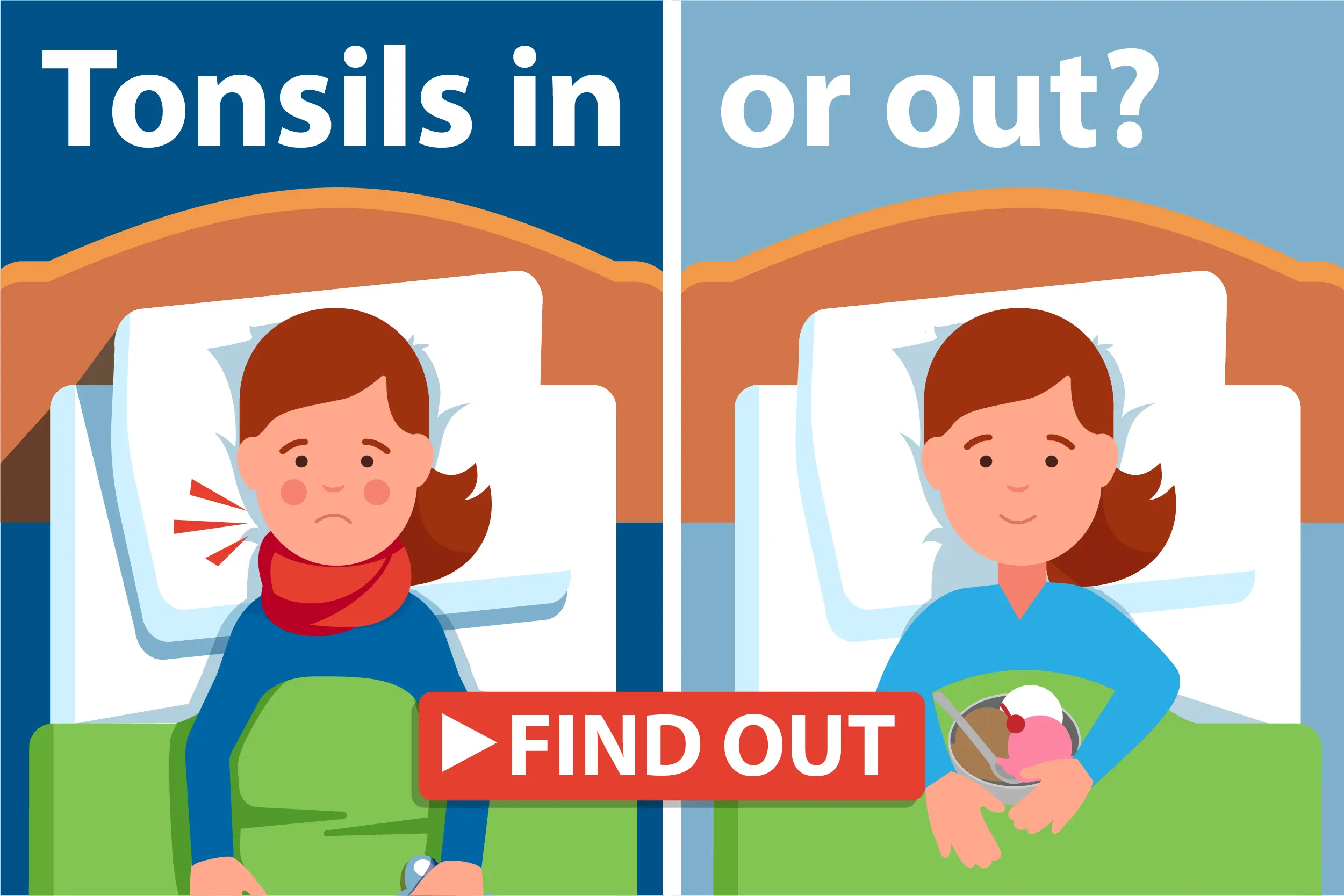Open Your Mouth and Say, “Ahhh!”

Open Your Mouth and Say, “Ahhh!
Chad Keller, DO is an otolaryngologist (more commonly referred to as ENT or Ear, Nose and Throat doctor) at Adena Regional Medical Center. He grew up in nearby Hocking Hills and went to college, medical school and residency right here in Ohio. Dr. Keller loves his work and sees both adult and pediatric patients.
Why Tonsils (and Adenoids)?
“One of the most common reasons we see pediatric patient's is due to concern for issues relating to the tonsils and adenoids. So it is important to know that pediatric patients’ can have treatment for these conditions locally," says Dr. Keller.
Tonsils are part of the body's immune system. They are located in the back of the mouth on each side of throat and help stop germs from entering the body. The adenoids are like the tonsils, but are located in the back of the nose. Both contain different kinds of white blood cells which are responsible for killing germs. Once a child reaches 12-18 months, other tissues help take over the immune process and tonsils and adenoids tend to shrink over time. When tonsils do not shrink over time, they may lead to infection or become enlarged.
Tonsils In or Tonsils Out?
It’s often a question, is it better to remove a patient’s tonsils, or not? The answer? It’s really a patient-by-patient determination. “We always recommend what we feel is best for the patient which means we don’t always recommend surgery.” says Dr. Keller.
While there are many reasons to remove the tonsils (tonsillectomy) or adenoids (adenoidectomy), there are two main reasons why a child would have their tonsils or adenoids removed, 1) they have repeated infections, called adenoiditis and tonsillitis or 2) they have enlarged tonsils which can cause issues in breathing properly during sleep called Sleep Disordered Breathing (SDB). Because the tonsils and adenoid are so alike, they are often removed together at the same time.
Sleep Disorder Breathing is the medical term for Obstructive Sleep Apnea (OSA) in children. SDB is different than Obstructive Sleep Apnea (OSA) that occurs in adults. In children, Sleep Disorder Breathing is most often caused by enlarged tonsils and/or adenoids. “Sleep Disorder Breathing, that’s really one of the biggest reasons we take tonsils out,” says Dr. Keller. Left untreated, enlarged tonsils and adenoids can lead to sleep deprivation in children, causing issues such as hyperactivity, bed-wetting, and “failure to thrive.” Symptoms of Sleep Disorder Breathing could be any of the previously named issues along with:
- Snoring
- Pauses in breathing during sleep
- Restless sleep or sleeping in unusual position
- Snorting, coughing or choking
- Chronic mouth breathing
What’s Trending - Less Pain, Lower Risk
“At Adena ENT, we offer a procedure called intracapsular tonsillectomy,” says Dr. Keller. “It’s become more popular over the last couple of years because it generally means less bleeding, less pain, less dehydration and quicker recovery time for the patient than a traditional tonsillectomy.”
Intracapsular tonsillectomy removes almost all of the tonsil tissue, but leaves a very thin layer of tonsil tissue in place to protect the sides of the throat which offers the benefits Dr. Keller mentioned above.
Intracapsular tonsillectomies are often performed when the tonsils/adenoids are enlarged; when the tonsils/adenoids are incurring high rates of infection, a traditional tonsillectomy is recommended. Both procedures offer a fairly smooth post-operative recovery, with “less than 5% of traditional tonsillectomy patients experiencing post-operative bleeding and around 1% or less post-operative bleeding in patients who receive the intracapsular tonsillectomy,” say Dr. Keller.
Where’s My Ice Cream?
Typically, tonsillectomy and adenoidectomy procedures are either a same day (patients come and go on the same day of surgery), or more often for younger patients, an overnight stay. “We like to observe our younger patients, to made sure they are recovering well,” says Dr. Keller. After surgery, patients are restricted to light activity for two weeks. This helps prevent strain and the potential for bleeding. Patients are also required to drink plenty of fluids and stay hydrated which helps keeps the throat moist and prevents it from feeling dry and sore. And yes, ice cream is allowed. “I tell parents and patients that after a tonsillectomy, they can generally eat or drink whatever they choose.” says Dr. Keller.
Dr. Keller and the Adena ENT staff are highly skilled and experienced along with their teams of nurses, anesthesiologists, and other health care assistants. They have years of experiences with kids and adults, so should you or a loved one need a tonsillectomy, you know you are in good hands with Adena ENT.
If you feel you or someone you know maybe suffering from continued strep, sore throats, ear infections, or has issues with disrupted sleep due to enlarged tonsils or adenoids, contact your Adena primary care provider for a referral or click here for guidance on what location and provider might work best for you.